Making Marjolaine Step 7: Building It
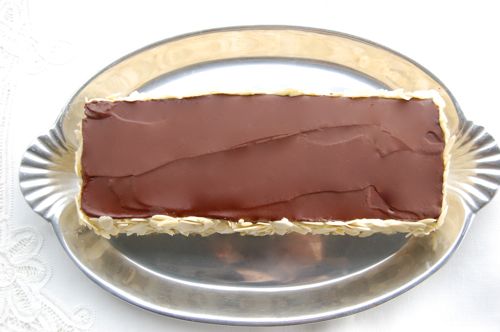
If I were to try to describe Joe Pastry heaven to you, it would go a little something like this: a warm spring afternoon, the kids and the missus are taking a nap. There’s a cold bottle of suds open, and a big ol’ pastry to build.
That was my Sunday, friends, and here’s what it looked like. I used a spatula to loosen the cake (you can also employ meringue, recipe below) from the sides of the sheet pan, then slid it — still on the parchment — onto my work surface.
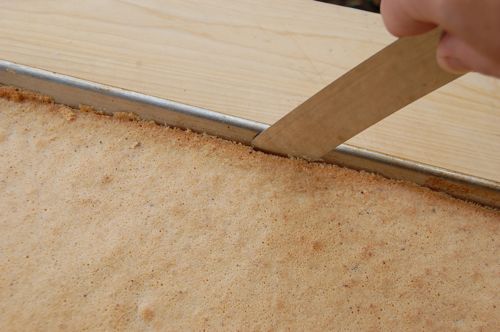
I got out my ruler and cut the cake into four equal strips (the exact size isn’t really important as long as the dimensions match)…
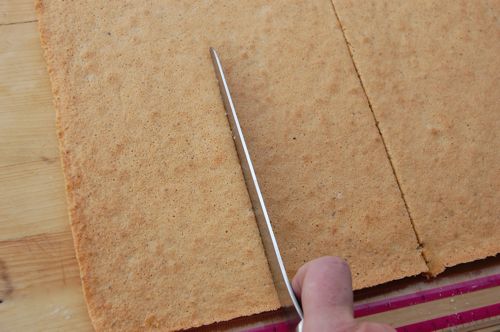
…then I trimmed off the hard, crusty ends…
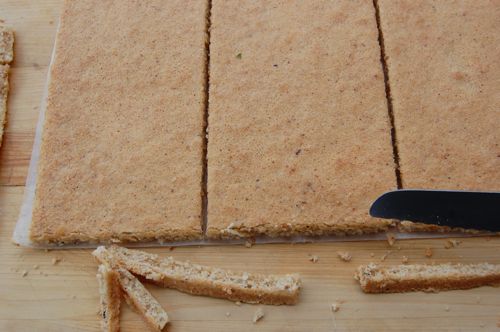
…and started stacking. I took one layer and placed it on a serving plate.
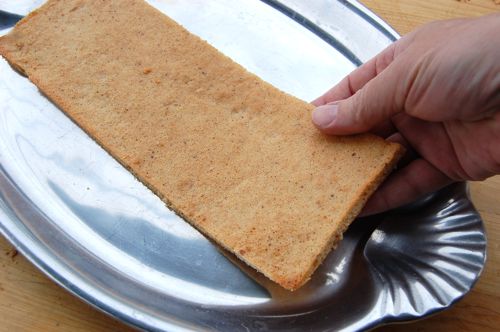
Then I cut two narrow pieces of parchment about the length of the bottom layer and tucked one under each edge. These were my “drop cloths”, so to speak.
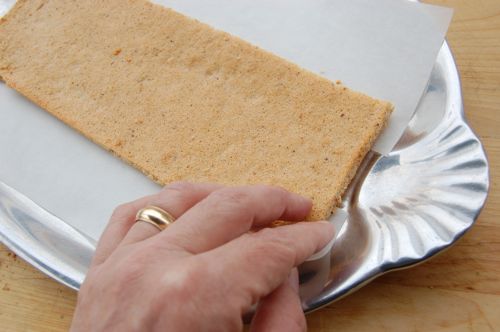
On the bottom went the ganache. I applied a nice thick layer, about 1/4 inch thick, paying special attention to the corners because the tendency is always to heap up filling in the center (this ends up giving the pastry a drop-shouldered look that isn’t terribly appealing).
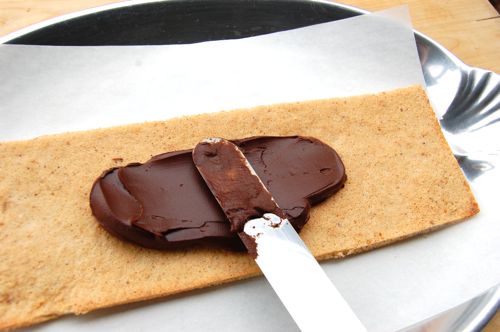
Once the ganache was applied, I put on the next layer…
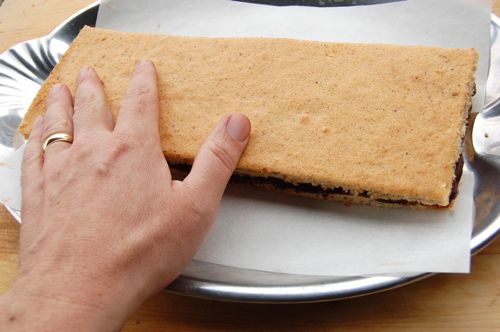
…and applied my prailine filling. Again, I put it on fairly thick, and squared off the corners and edges.
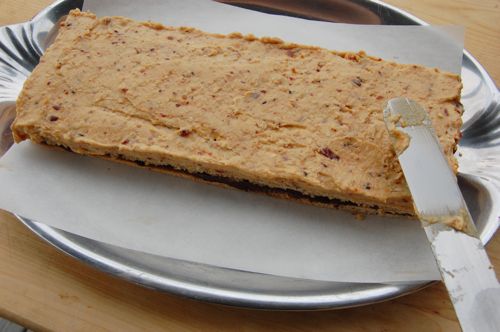
Then I put on the next sheet…
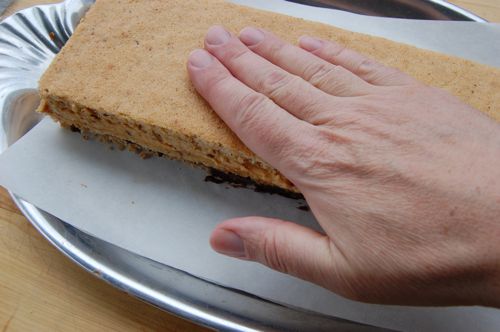
…and the rum pastry cream.
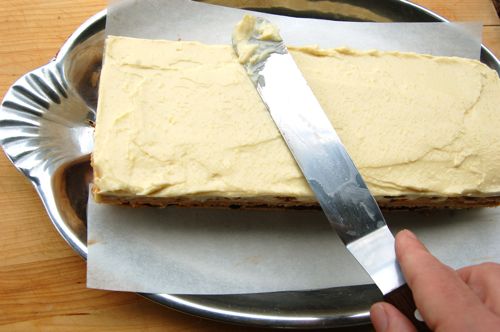
Then I applied the top layer. At this point I had several choices. I could have left the pastry as-is with maybe a dusting of powdered sugar on the top, however I decided to get a bit more jiggy widdit.
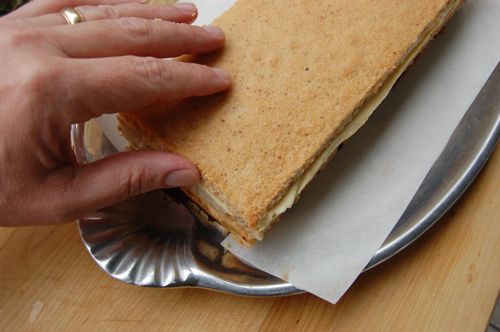
I had just enough ganache left in the bowl to do the top. I gave the ganache — literally — a two-second shot in the microwave to loosen it, then spread it quickly on. (I should point out here that ganaches tend to seize when you heat them like that, so if yours takes on a grainy or greasy texture, whisk in a couple of drops of cream to re-establish the emulsion).
Since I didn’t have enough ganache to do the whole thing, I applied some extra pastry cream to the sides…
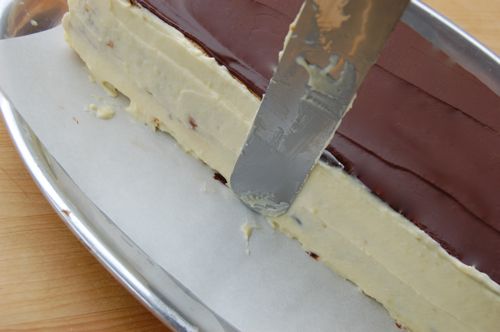
…then patted on some peeled and sliced almonds.
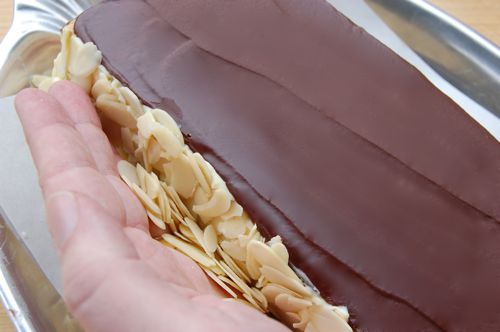
It’s a nice look, I think. What were my other options? Some people frost theirs completely with ganache or buttercream. Others cover theirs top-to-bottom with pastry cream and nuts. It occurred to me that pastry cream with patted-on leftover praline would be very nice too.
But where was I now? Oh yes, I gently slid out my strips of parchment paper…
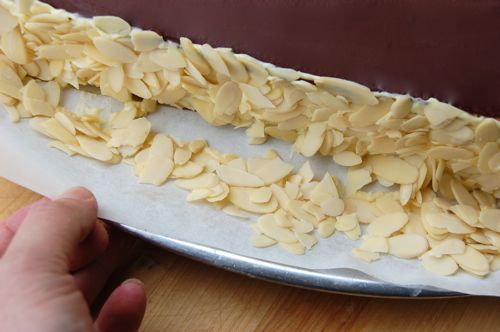
…then went around and stuck on a few extra almond slices where there were bald spots. Done!
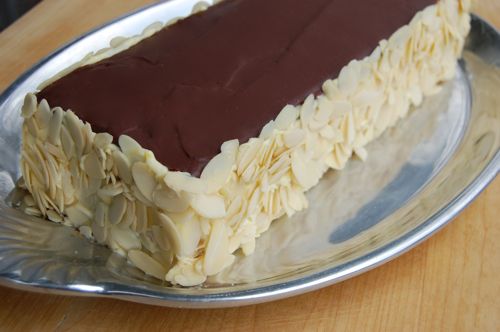
This finished pastry benefits from an overnight in the fridge, and can be kept as long as four or five days. It’s best served chilled, though I like to take it out of the refrigerator perhaps twenty minutes before serving to allow the ganache top to soften.
Awesome! I always wondered what it would look like.